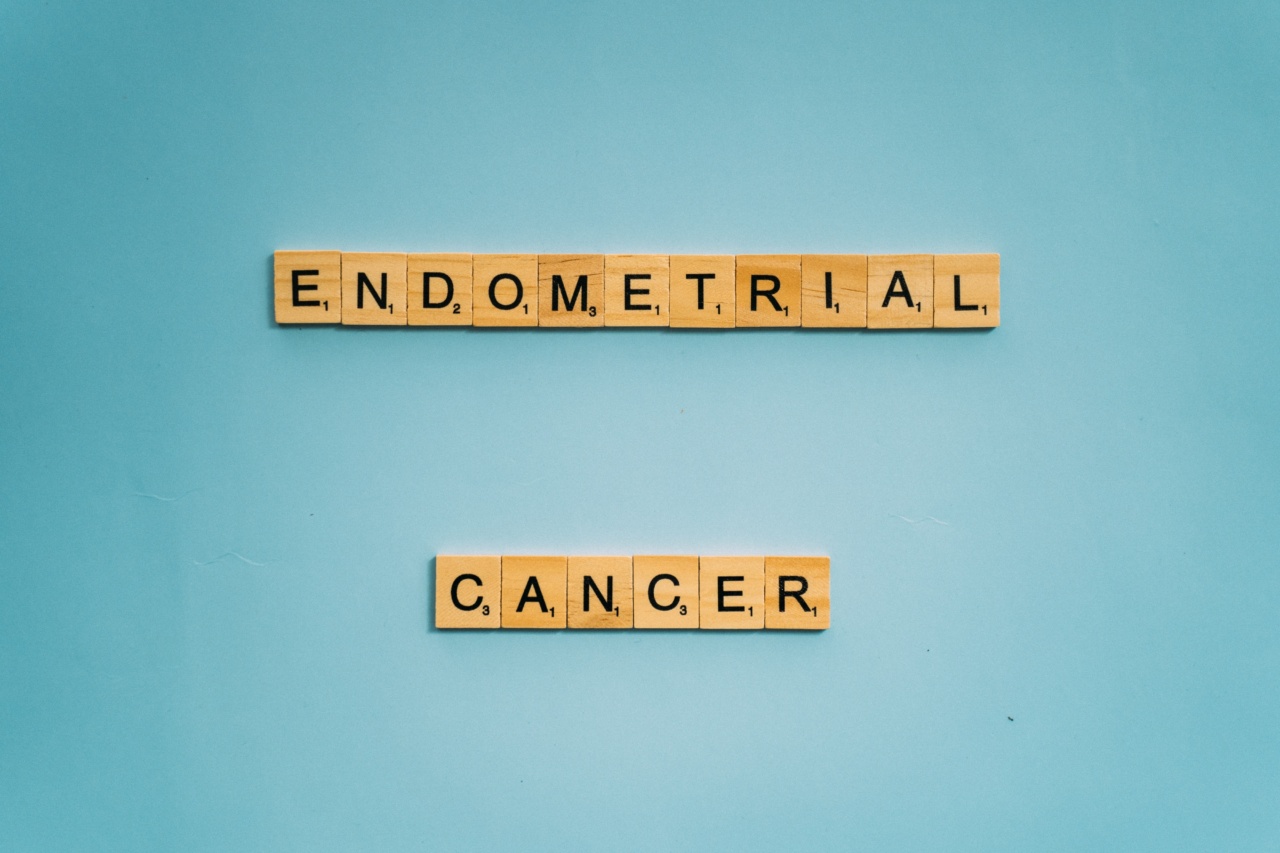Endometrial cancer, also known as uterine cancer, is a malignancy that arises from the lining of the uterus, called the endometrium.
It is one of the most common gynecological cancers among women, predominantly affecting those who have reached menopause. Endometrial cancer usually occurs in women aged 55 or older, but it can develop in younger women as well.
Types of Endometrial Cancer
There are two primary types of endometrial cancer:.
1. Type I – Endometrioid Adenocarcinoma
This type of endometrial cancer accounts for about 80% of cases. It typically has a better prognosis compared to Type II. Estrogen is thought to play a significant role in the development of Type I endometrial cancer.
2. Type II – Uterine Serous Carcinoma and Uterine Clear Cell Carcinoma
Type II endometrial cancer is less common, accounting for about 20% of cases. It tends to be more aggressive and has a poorer prognosis. Type II endometrial cancer is not usually influenced by estrogen levels.
Risk Factors for Endometrial Cancer
Various factors contribute to the development of endometrial cancer. Some of the common risk factors include:.
1. Obesity
Obese women are at a higher risk of developing endometrial cancer. The excess fat tissue leads to increased estrogen levels, which can stimulate the growth of endometrial cells.
2. Hormonal Imbalance
Conditions such as polycystic ovary syndrome (PCOS) or estrogen dominance can lead to hormonal imbalances that increase the risk of endometrial cancer.
3. Age
Endometrial cancer commonly occurs in women over the age of 55. The risk continues to increase with age.
4. Family History
If you have a family history of endometrial cancer, especially in close relatives like a mother or sister, your risk is elevated.
5. Lynch Syndrome
Lynch syndrome, also known as hereditary nonpolyposis colorectal cancer (HNPCC), is an inherited genetic condition that can increase the risk of various cancers, including endometrial cancer.
Prevention of Endometrial Cancer
While some risk factors for endometrial cancer, like age and family history, cannot be modified, there are steps you can take to reduce your risk:.
1. Maintain a Healthy Weight
Adopt a balanced diet and engage in regular physical activity to maintain a healthy weight. This can help prevent hormonal imbalances associated with obesity.
2. Hormonal Birth Control
Using hormonal birth control methods, such as birth control pills or hormonal intrauterine devices (IUDs), can help regulate hormone levels and reduce the risk of endometrial cancer.
3. Regular Physical Activity
Aim for at least 150 minutes of moderate-intensity aerobic exercise or 75 minutes of vigorous-intensity exercise each week. Regular physical activity can help regulate hormone levels and maintain a healthy weight.
4. Eat a Balanced Diet
Include a variety of fruits, vegetables, whole grains, and lean proteins in your diet. Avoid excessive consumption of processed foods, sugar, and unhealthy fats. A healthy diet can help maintain hormonal balance and overall well-being.
Early Detection of Endometrial Cancer
Early detection of endometrial cancer is crucial for better treatment outcomes. Here are some steps you can take for early detection:.
1. Recognize the Symptoms
Be aware of the common signs and symptoms of endometrial cancer, which may include abnormal vaginal bleeding, pelvic pain, difficulty urinating, or pain during intercourse.
Any unusual or persistent symptoms should be discussed with your healthcare provider.
2. Annual Well-Woman Exams
Undergo regular well-woman exams, including a pelvic examination and Pap test, as recommended by your healthcare provider. These exams can help identify any abnormalities or changes in the uterus.
3. Endometrial Biopsy
If your healthcare provider suspects endometrial cancer based on your symptoms or examination findings, they may recommend an endometrial biopsy. This involves collecting a small sample of the endometrial tissue to be examined under a microscope.
4. Transvaginal Ultrasound
A transvaginal ultrasound uses sound waves to create images of the uterus. It can help detect any abnormalities in the endometrium or other structures within the pelvis.
Treatment of Endometrial Cancer
The treatment plan for endometrial cancer depends on various factors, including the type and stage of cancer, overall health, and personal preferences. Common treatment options include:.
1. Surgery
Surgical removal of the uterus, known as a hysterectomy, is often the primary treatment for endometrial cancer. In some cases, the ovaries, fallopian tubes, and nearby lymph nodes may also be removed.
2. Radiation Therapy
Radiation therapy uses high-energy X-rays or other radiation sources to kill cancer cells and shrink tumors. It may be used after surgery to destroy remaining cancer cells or as the primary treatment for advanced cases.
3. Chemotherapy
Chemotherapy involves the use of anti-cancer drugs to kill cancer cells or prevent their growth. It may be recommended in cases where cancer has spread beyond the uterus or has a high risk of recurrence.
4. Hormonal Therapy
Hormonal therapy aims to block the effects of estrogen on cancer cells. It may be used in certain cases, such as when cancer recurrence is a concern or for patients who cannot undergo surgery or radiation therapy.
Final Thoughts
Endometrial cancer is a common gynecological malignancy that primarily affects women after menopause.
By understanding the risk factors, practicing preventive measures, and recognizing the signs and symptoms, early detection and prompt treatment can significantly improve outcomes. Regular check-ups and open communication with healthcare providers play a crucial role in maintaining gynecological health.




























